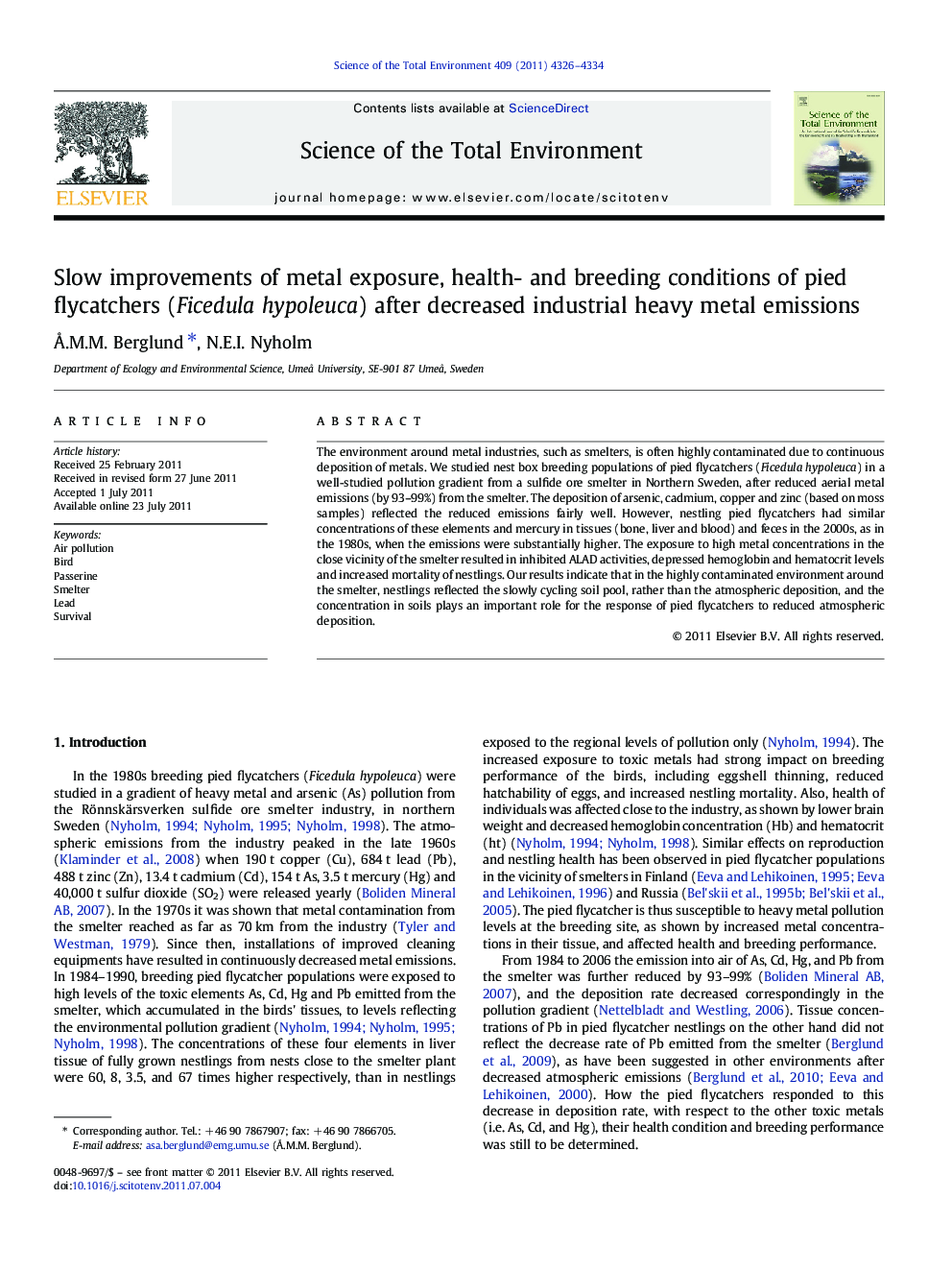| Article ID | Journal | Published Year | Pages | File Type |
|---|---|---|---|---|
| 4429924 | Science of The Total Environment | 2011 | 9 Pages |
The environment around metal industries, such as smelters, is often highly contaminated due to continuous deposition of metals. We studied nest box breeding populations of pied flycatchers (Ficedula hypoleuca) in a well-studied pollution gradient from a sulfide ore smelter in Northern Sweden, after reduced aerial metal emissions (by 93–99%) from the smelter. The deposition of arsenic, cadmium, copper and zinc (based on moss samples) reflected the reduced emissions fairly well. However, nestling pied flycatchers had similar concentrations of these elements and mercury in tissues (bone, liver and blood) and feces in the 2000s, as in the 1980s, when the emissions were substantially higher. The exposure to high metal concentrations in the close vicinity of the smelter resulted in inhibited ALAD activities, depressed hemoglobin and hematocrit levels and increased mortality of nestlings. Our results indicate that in the highly contaminated environment around the smelter, nestlings reflected the slowly cycling soil pool, rather than the atmospheric deposition, and the concentration in soils plays an important role for the response of pied flycatchers to reduced atmospheric deposition.
► Pied flycatchers were studied in a pollution gradient from a sulfide smelter. ► Metal emissions from the smelter have decreased substantially. ► Nestling birds still had high metal concentrations in tissues. ► Health and survival rates of nestlings were negatively affected. ► Recovery of birds is not expected in the near future.
